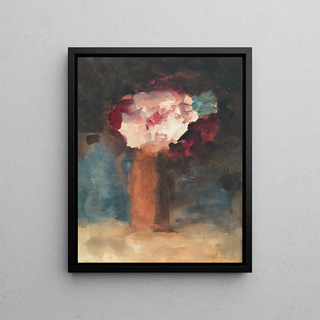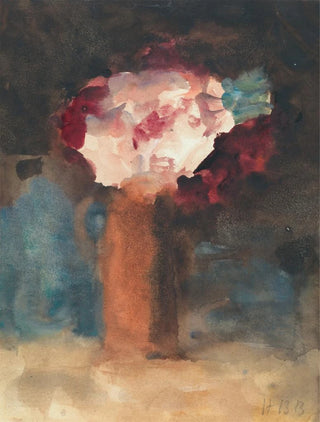Art print | Roses - Hercules Brabazon Brabazon


View from behind

Frame (optional)
Reproduction Roses - Hercules Brabazon Brabazon – Captivating Introduction
The artwork "Roses" by Hercules Brabazon Brabazon is a true ode to floral beauty, a painting that evokes delicacy and richness of colors. Gazing upon this creation, one is transported to a lush garden where roses, with their varied shades, bloom under a luminous sky. The artist manages to capture the very essence of these flowers, offering a visual experience that transcends mere observation. Every petal, every leaf seems to vibrate with its own life, inviting the viewer to immerse themselves in a world where nature and art meet in perfect harmony.
Style and uniqueness of the artwork
Brabazon's style is characterized by an impressionist approach that emphasizes light and color. In "Roses," he employs bold brushstrokes and blends of hues that create a vibrant atmosphere. The composition conveys a sense of movement, as if the roses are dancing in a gentle breeze. The artist does not merely reproduce reality but elevates it, transforming each rose into a symbol of passion and timeless beauty. The texture of the flowers, rendered with such finesse, allows the viewer to almost feel their fragrance. This painting is much more than a simple representation; it is an immersion into a rich and evocative sensory universe.
The artist and his influence
Hercules Brabazon Brabazon, an emblematic figure of the 19th century, knew how to mark his era with his unique vision of nature. As a Victorian artist, he was influenced by the artistic currents of his time, notably Impressionism and Pre-Raphaelitism. His passion for landscapes and botany is reflected in his work, where he seeks to capture the ephemeral beauty of flowers while paying homage to nature. Brabazon was also a pioneer in the use of color and light, thus influencing many artists who followed in his footsteps. His work demonstrates a rare sensitivity, blending meticulous observation with personal interpretation, which grants him a prominent place in art history.

Matte finish

View from behind

Frame (optional)
Reproduction Roses - Hercules Brabazon Brabazon – Captivating Introduction
The artwork "Roses" by Hercules Brabazon Brabazon is a true ode to floral beauty, a painting that evokes delicacy and richness of colors. Gazing upon this creation, one is transported to a lush garden where roses, with their varied shades, bloom under a luminous sky. The artist manages to capture the very essence of these flowers, offering a visual experience that transcends mere observation. Every petal, every leaf seems to vibrate with its own life, inviting the viewer to immerse themselves in a world where nature and art meet in perfect harmony.
Style and uniqueness of the artwork
Brabazon's style is characterized by an impressionist approach that emphasizes light and color. In "Roses," he employs bold brushstrokes and blends of hues that create a vibrant atmosphere. The composition conveys a sense of movement, as if the roses are dancing in a gentle breeze. The artist does not merely reproduce reality but elevates it, transforming each rose into a symbol of passion and timeless beauty. The texture of the flowers, rendered with such finesse, allows the viewer to almost feel their fragrance. This painting is much more than a simple representation; it is an immersion into a rich and evocative sensory universe.
The artist and his influence
Hercules Brabazon Brabazon, an emblematic figure of the 19th century, knew how to mark his era with his unique vision of nature. As a Victorian artist, he was influenced by the artistic currents of his time, notably Impressionism and Pre-Raphaelitism. His passion for landscapes and botany is reflected in his work, where he seeks to capture the ephemeral beauty of flowers while paying homage to nature. Brabazon was also a pioneer in the use of color and light, thus influencing many artists who followed in his footsteps. His work demonstrates a rare sensitivity, blending meticulous observation with personal interpretation, which grants him a prominent place in art history.






